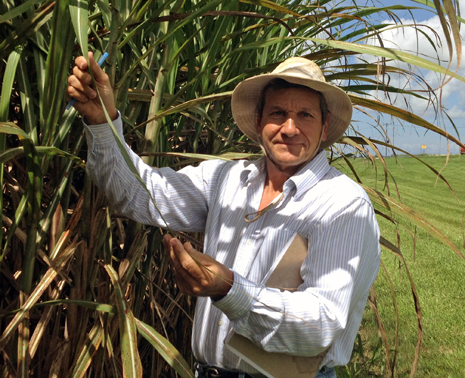
By Clint Thompson
What was mainly a fall disease problem for sweet corn producers has transitioned into a concern for growers during winter and spring production as well.
Southern corn leaf blight is an issue that now concerns Florida growers year-round, mostly due to warmer temperatures, said Richard Raid, University of Florida Institute of Food and Agricultural Sciences (UF/IFAS) professor of plant pathology at the Everglades Research and Education Center.
“With warming temperatures, it’s becoming a problem, almost now right through spring. It used to slack off during the cooler winter months. But now we’re seeing it go right through spring,” Raid said.
Disease Symptoms
According to UF/IFAS, the disease causes foliar lesions that are rounded on the sides. Lesions are light tan in the center with a dark red to brown border. If there are enough spores present, a greenish growth near the center of the lesion may appear.
The disease progresses upward, as the lower leaves are infected first.
It is even more of a concern due to the lack of resistant varieties available.
“With regards to the blight, southern and northern corn leaf blight, the breeding programs have provided some pretty good resistance to northern corn leaf blight out there. The resistance to southern corn leaf blight has been slower to come,” Raid said.
“That might be a contributing factor in terms of the rising importance of southern corn leaf blight. There’s just not as much host plant resistance out there, and then our temperatures have gotten a little bit warmer. All of those are contributing factors in terms of southern corn leaf blight becoming a bigger problem than it used to be.”
Growers should apply their spray programs immediately at the first sign of the disease if favorable weather conditions are in the future. Crop rotations and deep plowing of old crop debris will help reduce the disease’s inoculum for the following crop.









